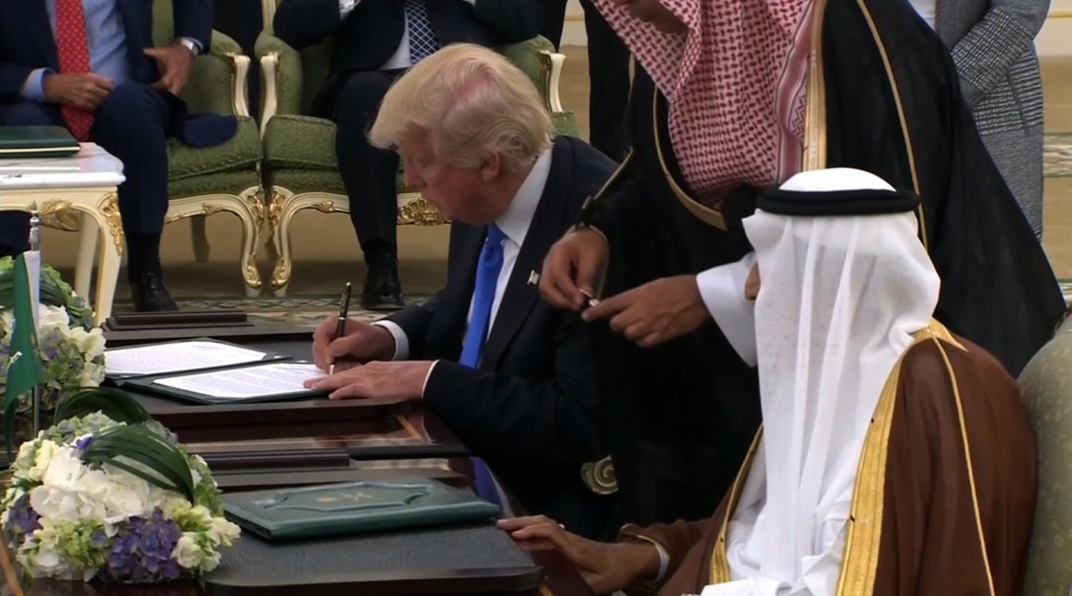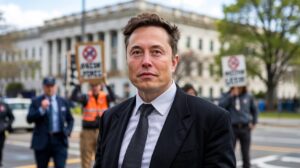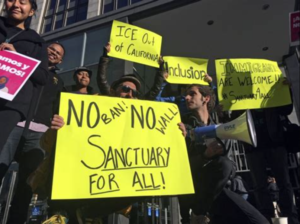Trump’s $100 Billion Arms Deal to Saudi Arabia marks a significant turning point in U.S. foreign relations, economic influence, and global power dynamics. This agreement is poised to reshape America’s role in the Middle East for years to come.
Understanding the $100 Billion Deal: What’s Included and Why It Matters
Former President Donald Trump’s announcement of a $100 billion arms package for Saudi Arabia includes some of the most advanced U.S. military technology.
The package involves C-130 Hercules transport planes, next-generation radar systems, precision-guided missiles, and a $20 billion contract for the latest MQ-9B SeaGuardian drones.
Deal Overview Table:
| Military Asset | Key Purpose | Strategic Impact |
|---|---|---|
| C-130 Hercules Aircraft | Heavy military transport | Improves Saudi Arabia’s mobility |
| MQ-9B SeaGuardian Drones | Surveillance and airstrike missions | Enhances border and sea security |
| Advanced Missile Systems | Targeted defense and offense | Strengthens Saudi military offense |
| Next-Gen Radar Technology | Threat detection and interception | Bolsters airspace protection |
Why Saudi Arabia? Understanding America’s Strategic Move
Saudi Arabia is crucial to U.S. interests in the Middle East. Trump’s arms deal reinforces the long-standing relationship with Riyadh to:
- Counterbalance Iranian influence.
- Secure vital oil trade routes.
- Support the U.S. defense economy with major export revenue.
- Protect American interests in the Persian Gulf region.
U.S. Strategic Interests Behind Saudi Arms Deal
[U.S.-Saudi Arms Deal]
/ | \
[Counter Iran] [Boost U.S. Jobs] [Energy Security]
In 2024, Saudi Arabia was America’s largest military equipment buyer in the Middle East, accounting for 25% of U.S. arms exports to the region.
Key Components of the Deal: What is Saudi Arabia Buying?
The arms package is built to dramatically upgrade Saudi Arabia’s military strength. Here’s a breakdown:
| Component | Value (Approx.) | Description |
|---|---|---|
| Transport Aircraft | $15 billion | Boost military logistics and deployment. |
| Surveillance Drones | $20 billion | Expand aerial surveillance capabilities. |
| Advanced Missile Systems | $30 billion | Reinforce offensive and defensive power. |
| Radar and Defense Systems | $35 billion | Upgrade anti-aircraft protection. |
Reactions Across the U.S.: Economic Gains vs. Ethical Concerns
Trump’s $100 Billion Arms Deal to Saudi Arabia has sparked major debate in Washington D.C. and across the country:
- Supporters:
- Job creation across defense hubs like Texas, Arizona, and Virginia.
- Strengthened U.S. arms market dominance globally.
- Reinforces military alliances in the Middle East.
- Critics:
- Concerns over Saudi Arabia’s human rights record.
- Fear of escalating regional tensions.
- Ethical questions about empowering authoritarian regimes.
According to SIPRI, U.S. arms exports rose by 14% from 2020 to 2024, with Saudi Arabia accounting for 24% of total sales in 2024.
The Economic Impact: How Many U.S. Jobs Are at Stake?
The Trump administration argues that the $100 billion arms deal could directly and indirectly support more than 500,000 American jobs across the defense manufacturing sector.
| Industry Sector | Estimated Jobs Supported |
|---|---|
| Aerospace (e.g., Boeing) | 150,000 |
| Defense Tech (e.g., Lockheed) | 200,000 |
| Drone Manufacturing | 50,000 |
| Logistics & Maintenance | 100,000 |
Long-Term Effects: What This Means for U.S. Global Influence
This arms deal cements America’s leadership in global arms trade. It also ensures Saudi Arabia stays closely tied to U.S. military technology, reducing their temptation to turn to Russia or China for defense needs.
However, America will have to balance maintaining strong alliances with promoting human rights and peace in the region.
By 2030, U.S. arms dominance could exceed 50% of the global market share if deals like this continue.
Conclusion: A New Chapter for U.S. Power and Policy
Trump’s $100 Billion Arms Deal to Saudi Arabia signals more than just a large military transaction—it represents America’s strategic blueprint for maintaining global influence, economic strength, and security dominance.
While benefits are clear in terms of job growth and power projection, future administrations must tread carefully to ensure that such alliances align with broader American values.
[USnewsSphere.com / reu.]





